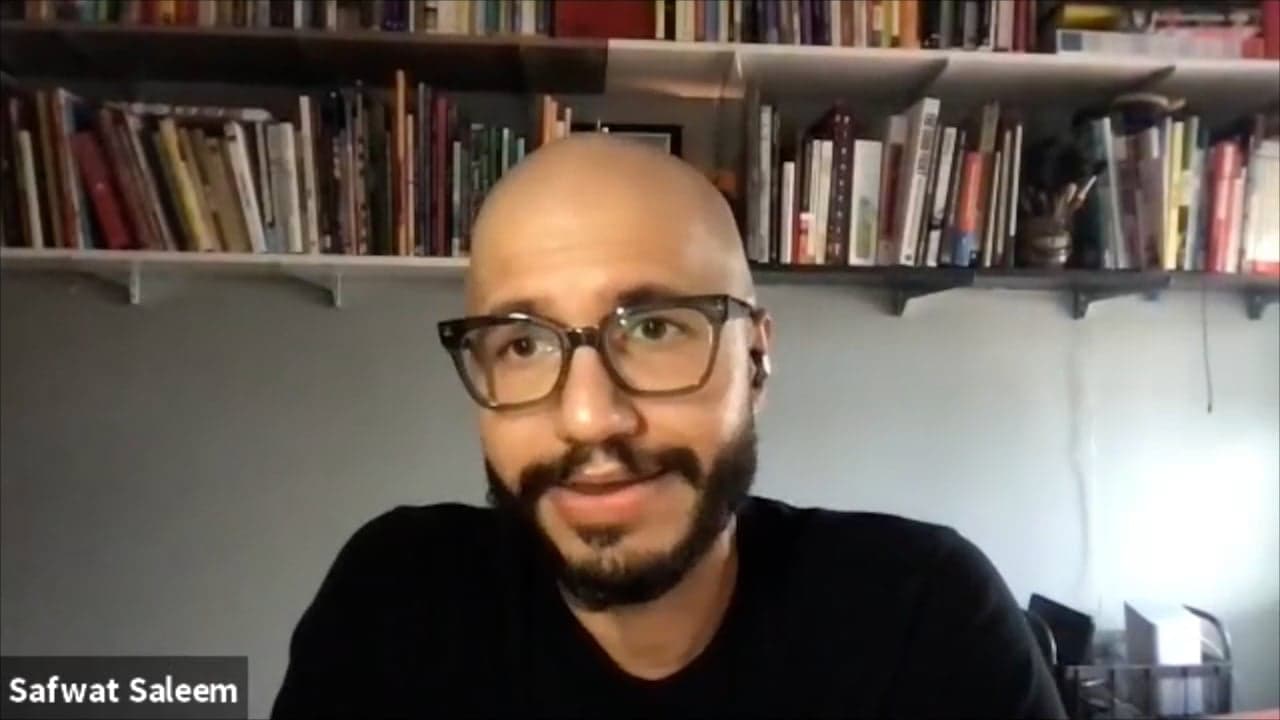About "Garam Masala" (Safwat Saleem x SAADA)

Safwat Saleem x SAADA
About "Garam Masala"
Artwork inspired by the search for spices.
Safwat Saleem x SAADA
Behind the Design
The design for “Garam Masala,” was inspired by the search for spices and the rare moment of finding a small, but important, piece of home away from home.

The Story of the Patel Brothers
"It was an issue of appetite, mostly. His meals were the places where this alienation became most stark, dinners like small marches of misery, with American flavors he found difficult to find comfort in— nothing like the khichdi or curries he had grown up eating. Where was rice flour? Turmeric? This was an era in which Indians had to stuff canisters of these ingredients inside their checked luggage."
Begun in Chicago in 1974 by brothers Mufat and Tulasi Patel and Tulasi's wife, Aruna, Patel Brothers is among the oldest and largest South Asian grocery stores in the U.S. Mufat, Tulasi, and Aruna Patel opened their first shop on Devon Avenue in Chicago, Illinois, and gradually expanded to other city centers with sizable South Asian populations, including Detroit, New York, Houston, and Atlanta.
Safwat's inspiration for his "Garam Masala" design grew from his discovery of SAADA's Patel Brothers archival collection.
Introducing the Artist: Safwat Saleem

Safwat Saleem
Safwat Saleem is a visual artist, graphic designer and filmmaker. He uses satire and art to bring to light stories of adversity and feels the most at home when making politically-charged satirical art.
"These two grandmothers of mine had two very different notions of garam masala…and both of them would insist that theirs was, of course, the better one."

Dr. Krishnendu Ray
Dr. Krishnendu Ray is an Associate Professor of Food Studies at NYU. He is the author of The Migrant’s Table: Meals and Memories in Bengali-American Household and The Ethnic Restaurateur.
Historical Context: Early South Asian American Restaurants

Dr. Vivek Bald
Dr. Vivek Bald is a scholar, writer, and documentary filmmaker whose work focuses on histories of migration and diaspora, particularly from the South Asian subcontinent. He is the author of Bengali Harlem and the Lost Histories of South Asian America.
"I knew that I wanted to do something with food, something with spices, with that story."

Explore More

Safwat Saleem
Safwat Saleem is a visual artist, graphic designer and filmmaker. He uses satire and art to bring to light stories of adversity and feels the most at home when making politically-charged satirical art.

Patel Brothers Archival Collection
Discover more from our archival collection of materials that tell the story of the Patel Brothers.

J. Ranji Smile
"More discerning folks recognized him immediately. He was no prince at all, but a chef — and quite an accomplished one at that. Two years prior, he had grabbed headlines as Joe Ranji Smile, sometimes shortening the Joe to 'J.' He was a cook at Sherry’s, a tony Manhattan establishment, and he hailed from what was then colonial India but is today Pakistan. As an 1899 article syndicated in papers across the country surmised, this colorful man who dazzled diners with his 'curry of chicken Madras' and 'Bombay Duck” was 'the first India [sic] chef America has ever seen.'"
Artwork by Hanifa Abdul Hameed.
Shop the "Garam Masala" Collection







